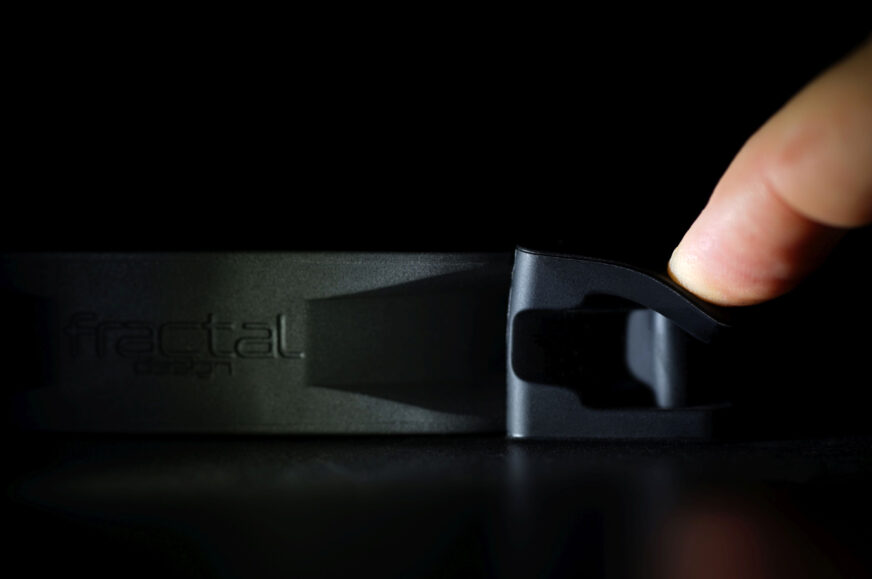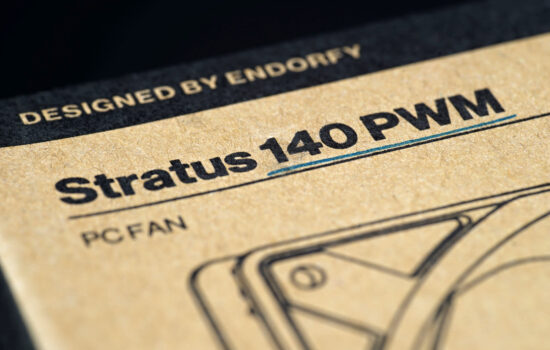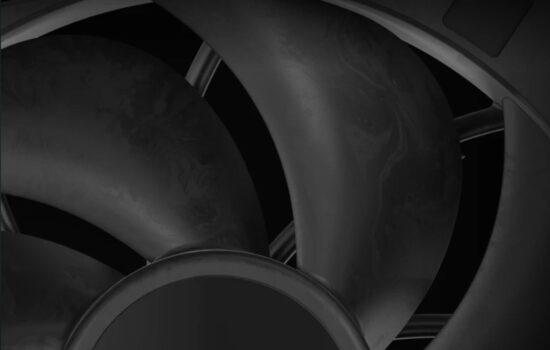Evaluation
Venturi fans have some of the softest mounting corners. The transmission of vibrations from moving parts further away to anything (case plates, heatsink fins, …) is thus very significantly damped. Compared to other (even more modern Fractal Design models), these fans have more robust blades, which are both thicker and wider, and as a result, higher static pressure is also achieved at comparable speeds.
Evaluation
The Venturi HP-14 PWM is an efficient 140mm fan that finishes very closely below the Noctua NF-A14 PWM in the most favorable scenarios. This is typically at higher (than low) speeds on obstacles such as a hexagonal grille or radiators. In these conditions, it usually outperforms even newer Fractal Design fan models in the form of the Prisma AL-14 or Aspect 14 (RGB). In the aforementioned conditions, on selected obstacles, the Venturi HP-14 benefits from both higher static pressure due to smaller gaps between the blades and larger blades overall.
At lower speeds (from about 800 rpm downwards) the situation reverses. If only comparable speeds were considered, the Venturi HP-14 would still have the upper hand, but in tests normalized by noise level, it starts to lose out. The lower the noise level is set, the more so. It is caused by a non-arodynamic motor sound, a soft whirring sound that the Venturi has unlike the Aspect 14 (PWM) or the NF-A14 PWM. This sound is captured in spectrographs in the band around 1200 Hz.
The operation of several older Fractal Design fans is characterized by a certain whirring, the Prisma (AL-14) and the Dynamic X2 (GP-12), it only disappeared from the Aspects. However, it’s nothing terrible, unbearable, and compared to the Cooler Master SickleFlow 120 ARGB fan it’s a significantly weaker whirr. In closed cases from a greater distance, it does not disturb so much.
In this case, the fan’s extra-soft corners have a clear justification. At the basis, apparently at the motor level, some vibrations arise and these corners neatly eliminate them. That “there’s stuff to damp” is indicated by the very small vibrations we detected at top speed as well. With harder corners they would certainly be higher. But the important thing is that in the trim the fan comes with, from 1100rpm downwards, it doesn’t transmit any vibrations to the case.
And when you consider that the Venturi HP-14 PWM allows unique installation into positions for 120mm fans, it may be one of the few such efficient options for select situations. That is, as long as you avoid the rare but rather annoying resonant frequencies. High tonal peaks were recorded both on the hexagonal grille (370 Hz at approx. 800 rpm) and on the radiator (135 Hz at approx. 1080 rpm). These scenarios are good to avoid, otherwise we can talk about a fairly balanced and therefore pleasant acoustic profile.
Of course, you will never get rid of the aforementioned whirring, but this is a compromise that may not bother you so much in more powerful setups at higher speeds. Of course, that depends, the Venturi HP-14 is not a good choice for builds tuned for extra-quiet operation.
The stated airflow in the parameters is significantly higher than in reality. The older Fractal Design fans clearly had some measurement errors at this level, which is well demonstrated by comparing the official specifications of the Prisma AL-14 with the Aspect 14, which are virtually identical fans by design that are supposed to achieve significantly different airflow at the same speeds, but in reality that does not actually happen. There is no technical reason for this. But this is just a small, unimportant detail, which does not detract from the qualities of the Venturi HP-14 PWM. We can calmly recommend these fans, unless you consider the above mentioned shortcomings to be crucial.
English translation and edit by Jozef Dudáš
| Fractal Design Venturi HP-14 PWM |
| + Suitable for every scenario |
| + Cooling efficiency (airflow/pressure per unit of noise) at a very high level |
| + Very high efficiency with dust filters as well |
| + Wide speed range |
| + Extra low, negligible vibrations |
| + Very soft, replaceable mounting corners... |
| + ... with support also for smaller 120 mm fan spacing |
| + Decent build quality |
| - A little whirring of the motor, for very quiet computers this will be a hindrance |
| - Eventual high tonal peaks in some situations |
| - Does not support passive mode, does not "turn off" at low PWM duty cycle |
| Approximate retail price: 22 EUR |
- Contents
- Details of the Fractal Design Venturi HP-14 PWM
- Overview of manufacturer specifications
- Basis of the methodology, the wind tunnel
- Mounting and vibration measurement
- Initial warm-up and speed recording
- Base 6 equal noise levels…
- ... and sound color (frequency characteristic)
- Measurement of static pressure…
- … and of airflow
- Everything changes with obstacles
- How we measure power draw and motor power
- Measuring the intensity (and power draw) of lighting
- Results: Speed
- Results: Airlow w/o obstacles
- Results: Airflow through a nylon filter
- Results: Airflow through a plastic filter
- Results: Airflow through a hexagonal grille
- Results: Airflow through a thinner radiator
- Results: Airflow through a thicker radiator
- Results: Static pressure w/o obstacles
- Results: Static pressure through a nylon filter
- Results: Static pressure through a plastic filter
- Results: Static pressure through a hexagonal grille
- Results: Static pressure through a thinner radiator
- Results: Static pressure through a thicker radiator
- Results: Static pressure, efficiency depending on orientation
- Reality vs. specifications
- Results: Frequency response of sound w/o obstacles
- Results: Frequency response of sound with a dust filter
- Results: Frequency response of sound with a hexagonal grille
- Results: Frequency response of sound with a radiator
- Results: Vibration, in total (3D vector length)
- Results: Vibration, X-axis
- Results: Vibration, Y-axis
- Results: Vibration, Z-axis
- Results: Power draw (and motor power)
- Results: Cooling performance per watt, airflow
- Results: Cooling performance per watt, static pressure
- Airflow per euro
- Static pressure per euro
- Results: Lighting – LED luminance and power draw
- Results: LED to motor power draw ratio
- Evaluation













I wonder the reason why these type of corners, despite being so effective, are uncommon. Is it a lack of necessity due to inherent low vibrations, rubber pads/mounts being good enough/better, or some kind of cost or mechanical concerns?
It’s hard to say anything for sure. But I will dare to speculate.
Let’s assume that higher vibrations characterize mainly the cheaper fans, where the goal was to make them as cheap as possible. All-rubber corners don’t fit into this scheme (lowest cost) (such Arctic P12 don’t even have rubber pads), so they are usually not used. And again, when there is a bigger budget for fans, the funds can be put into things that suppress vibrations more effectively than perfect anti-vibration corners. Whether it’s a stiffer material (just with a larger thickness or a different composition, for example LCP instead of PBT) or a less vibrating motor etc.